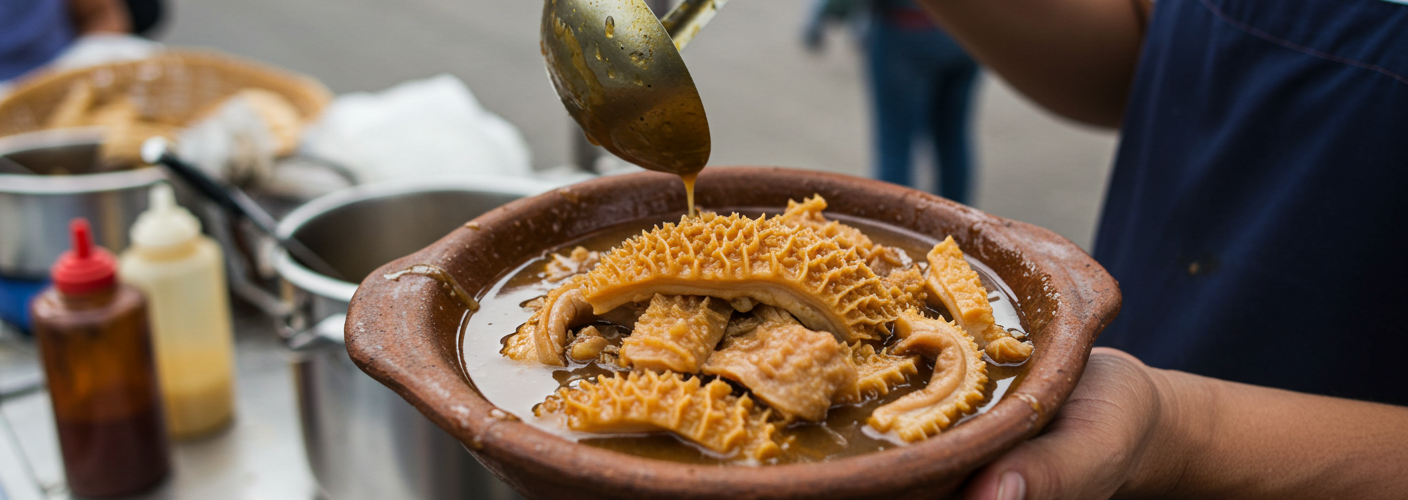If there’s one dish that embodies the rich and diverse culinary landscape of Latin America, it has to be Guatita. This hearty stew made with tripe is not just a meal; it’s a celebration of tradition, culture, and the joy of sharing food with loved ones. Originating from the Andean region, particularly popular in Ecuador and parts of Peru, Guatita resonates with many for its comforting flavors and nourishing qualities.
The Star Ingredient: Tripe
Tripe, the main ingredient in Guatita, is the edible lining of the stomachs of various farm animals, primarily cows. It may not be the first choice for everyone, but when prepared correctly, it transforms into a delectably tender and flavorful component of the stew. The unique texture of tripe, along with its ability to absorb the flavors of the other ingredients, makes it an excellent foundation for this dish.
The Flavorful Base
The heart of Guatita lies in its rich and aromatic sauce, typically made from a mix of ingredients such as onions, garlic, cumin, and aji amarillo, a staple in many Latin dishes that adds both heat and depth. Tomatoes and potatoes often contribute to the stew’s heartiness, while herbs like cilantro bring freshness to the overall flavor profile. The result is a perfect harmony of savory and slightly spicy notes, providing both comfort and excitement for the palate.
A Dish of Tradition
Traditionally, Guatita is served with a generous helping of rice and sometimes a side of avocado or salad, allowing the vibrant flavors of the stew to shine. Its origins can be traced back through generations, often prepared during family gatherings, special occasions, or simply as a beloved weekday meal. It is not uncommon to find variations depending on family recipes, with each cook adding their personal touch, whether that’s adjusting the spice levels or including additional vegetables.
The Community Aspect
One of the most endearing attributes of Guatita is its role in bringing people together. Sharing a pot of steaming Guatita over a communal table fosters connection and conversation. In Ecuador, it’s often enjoyed on weekends or during festive occasions, symbolizing unity and love among family and friends. Just as the ingredients meld together in the stew, so does the community that gathers to enjoy it.
Modern Adaptations
In recent years, Guatita has found its way into the hearts and kitchens of modern food enthusiasts, with recipes popping up on blogs and social media platforms. While traditional methods remain cherished, many cooks are experimenting with contemporary twists, such as using alternative proteins or incorporating unique spices, thereby introducing this classic dish to new audiences. Whether you’re a die-hard fan or trying it for the first time, Guatita has rightful claim to a spot in the spotlight of modern culinary discussions.
Conclusion
Guatita is more than just a stew; it is a symbol of cultural heritage, love, and community. This delightful tripe dish celebrates the flavors of the Andean regions, and its heartwarming qualities are sure to resonate with anyone who has ever shared a meal with family or friends. So, the next time you’re looking to try something new or want to experience a genuine slice of Latin American cuisine, look no further than a steaming bowl of Guatita. Steeped in tradition and bursting with flavor, it’s a dish that promises both satisfaction and a sense of belonging.




Add comment